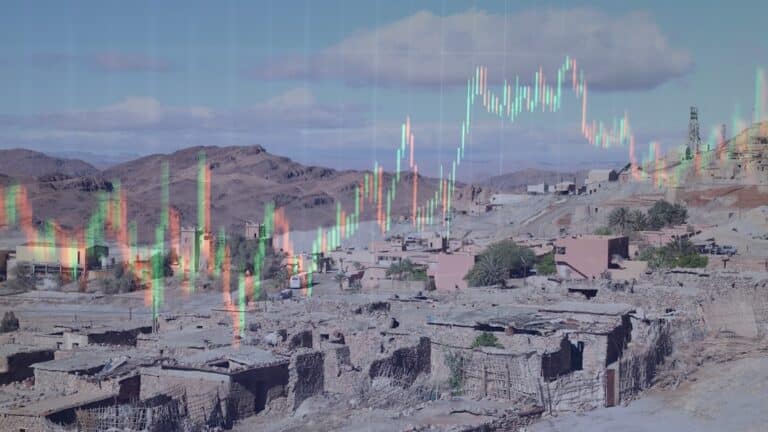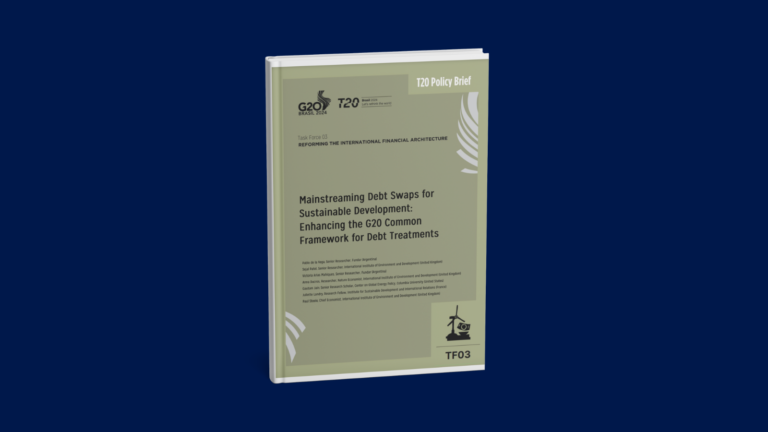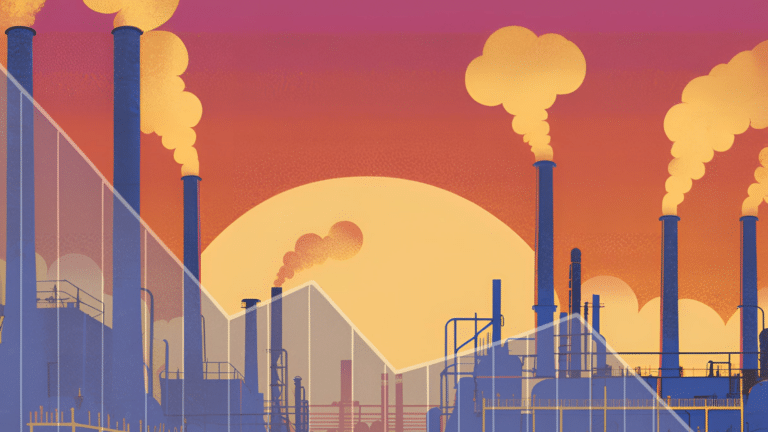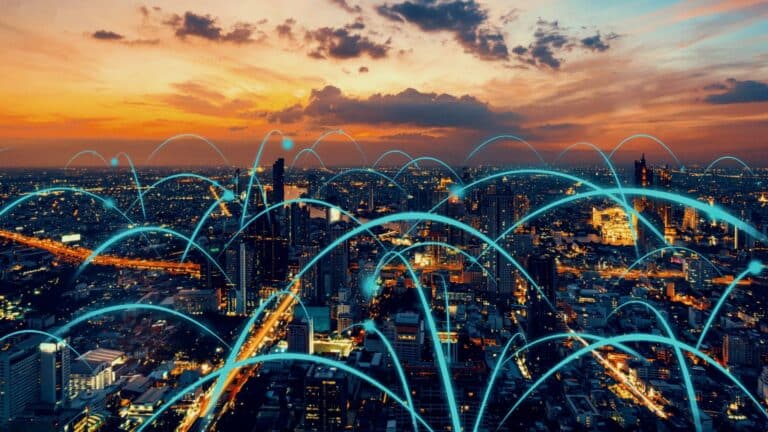Guest
Varun Sivaram
CGEP Fellow
Host Bill Loveless sits down with Fellow Varun Sivaram to discuss: ITC complaints brought by Suniva and SolarWorld; objections to the trade action by industries and solar-energy installers; tariffs and other remedies offered by International Trade Commission members; how President Trump might respond to ITC options; and the need for new technology to advance solar energy.
View the Full Transcript
[00:00:01]
Bill Loveless: Hello and welcome to the Columbia Energy Exchange, a Podcast from the Centre on Global Energy Policy at Columbia university from Washington I’m Bill Loveless. Today we are going to talk about a clash over imports of solar energy components in the US and is heating up. A new report from the US international trade commission offers president Trump, a range of tariffs and other options to protect American makers of solar equipment from unfairly priced imports from China and other countries. The two companies seeking trade relief Suniva and SolarWorld say such action is necessary to help domestic producers.
But they find themselves at odds with industries and installers of Solar energy which claims such measures would raise prices for solar applications and slow their growth. How well this plays out is up to president Trump. He has until early January to decided on a response to the remedies offered by four members of the independent commission. Now, to get a sense of what might happen? I sort out a prominent voice on the topic Varun Sivaram.
A nonresident fellow at the centre on global energy policy. Varun is also the Philip D. Reed fellow for science and technology at the council on foreign relation an Ad Junk professor at the Georgetown university school of foreign service, and he’s been a strategic advisor to New York governor Andrew Como and that’s not all, he is the author of a book to be published soon by MIT university press called Taming the Sun, innovations to harness solar energy and power the planet. Varun and I got together at CFRs offices in Washington. Varun Sivaram, welcome to the Columbia Energy Exchange.
[00:01:48]
Varun Sivaram: Thank you for having me Bill.
[00:01:50]
Bill Loveless: Varun the clock is ticking now and what could be a decision by the Trump administration with major implications for the US solar industry, president now has two months to decide on recommendations from the international trade commission for tariffs on US imports of crystalline solar cells and modules. But, before we get into that report let’s just go back and look at what gave rise to the situation.
[00:02:15]
Varun Sivaram: Absolutely, so let’s talk a bit about how we got here and what today’s solar market looks like, we got here because over the last decade the cost of solar panels and the cost of installed solar has fallen precipitously. A lot of that has been a result of cheap supplies of solar panels, from China. As a result lot of US companies have gone out of business and that’s what brings us here to this case today two solar manufacturers who aren’t doing so well arguing that they need tariffs in order to continue to manufacture in the United States.
But it’s worth diving into the history a little bit to figure out whether today’s tariff proposal is a worthwhile solution or if it’s just closing the barn door after the horse is bolted. But a decade ago, China only accounted for 10% or so of global manufacturing of solar panels. And then over the next decade China rose rapidly, today it accounts for over two thirds of global production and Chinese companies manufacture even more outside of China elsewhere for example in Southeast Asia. And in the same time period United States has fallen off the map as a manufacturer of solar panels, it largely does not manufacture these panels anymore.
Now, it is the case that between 2010 and 2013 an increase in imports of cheap Chinese solar panels did cause a lot of US companies to go out of business and the US commerce department found that China may have dumped solar panels on to the United States market and this happened as a result of the Chinese government offering aid in the form of loans for example to Chinese manufacturers. So, it’s indisputably the case that some amount of Chinese government support has lead to under pricing a sort of panels and a result US companies both innovative start ups and larger manufacturers have gone out of business.
[00:04:08]
Bill Loveless: And most of the difficulty that – that the producers have had involved Chinese producers.
[00:04:14]
Varun Sivaram: Yes exactly, it was low cost Chinese producers between 2010 and 2013 that really dropped the price of solar. And by the way, the reasons these producers came into the market so rapidly was they were responding to generous incentives in the developed world, for example in Europe and Germany that supported the deployment of solar power. And so Chinese producers rushed to market probably built a lot of over capacity fueled by loans from the Chinese government. And then we had an over capacity problem and prices plunged. My point with saying all this though is all this is the past. This is all 2010 to 2013.
Since then China has consolidated, it’s grip on the solar market. United States did in fact impose tariffs but the US and the Europe Union imposed tariffs on solar panels from China and later on Taiwan. As a result since then some of the production has moved off shore elsewhere in Southeast Asia, and that brings us to today’s situation where you have got two companies in the United States by the way both of them are foreign owned Suniva owned by Chinese company, SolarWorld subsidiary of an insolvent German company.
Both of these companies are arguing that we need tariffs in order to prevent imports from every country, not just China because China has offshore a lot of its production to countries like Malaysia and South East Asia.
[00:05:38]
Bill Loveless: So Varun, what are they asking for in these petitions?
[00:05:43]
Varun Sivaram: The petitions were asking for a pretty severe remedy, they wanted tariffs, a combination of tariffs and quotes, that would effectively have doubled the price of solar panels or more. And, and this is just at a time when solar has become one of the most economical energy sources in United States and around the world. We are seeing the cost of solar today in the United States on an unsubsidized basis about at parity with natural gas in some parts of the country. So just as solar has become economical and it’s growth is booming, that’s exactly the point when these tariffs could set back, that rapid growth trajectory.
[00:06:22]
Bill Loveless: Interesting, I have to ask you and I usually like to do this with guest. What brought them to the subject? What brought them in this case your case, to your interest in solar energy you hold degrees from Stanford in engineering physics and international relations and as a Road Scholar, a PhD in Condensed Matter Physics, from Oxford University, how did all this gets you into solar?
[00:06:46]
Varun Sivaram: I used to work for – my first job was working for an innovative solar company it was called Nanosolar and they made this flexible solar solar photovoltaic take product that was going to be far cheaper than the prevailing Silicon Technology and it was going to be versatile and we are going to change the world. I work for two start ups in Silicon Valley and in my graduate school, I – I studied a brand new solar technology. And right when I graduated, I found that the companies I had worked for previously had gone bankrupt, that a flood of cheap Chinese Silicon solar imports – over a half century old technology had just wiped out every innovative company in Silicon Valley.
And there wasn’t a place to go work in the solar industry if I wanted to be at the cutting edge anymore. I realized that this probably an important role that public policy needs to play, to help companies that are getting lost in the valley of death, before they can commercialize their cutting edge products. And so I have worked since then in city government in the city of Los Angeles, I have worked in state government in the state of New York. Now, I work at the council on foreign relations on national and foreign policy studying what are the ways that the United States government and governments around the world can support energy technologies that are absolutely crucial to combating climate change, but aren’t going to get off the ground, just left to the wimps of the private sector or up against the head wins of foreign government support for example in China.
[00:08:14]
Bill Loveless: Interesting well let’s break down the report the international trade commission has sent to president a private report now, detailing a recommendations of the various commissioners, in the agency and they offered various options for action against foreign producers, options that fell short of what Suniva and SolarWorld sort, what were these options?
[00:08:40]
Varun Sivaram: So, there are four commissioners, and these four commissioners came up three options, so two of them backed one option, and then the other two each had their own distinct options. I ordered these options on a spectrum of light to severe and I got to say that all three of this options are much less severe then what Suniva and SolarWorld, the petitioners had asked for.
So these aren’t the incredibly high tariffs that the petitioners thought they would get and that they argue are necessary to resuscitate American industry but more on that later. The lightest option came from commissioner Broad Ben and it largely aligns with the solar energy industry view which is – let’s not impose tariffs, let’s not raise the price of solar, let’s instead say, we accept that the production of solar photovoltaic cells and modules cell as a sub component of a module or a panel. Let’s accept that that production is going to happen off shore, it’s going to happen in China or in Southeast Asia, United States is just not structured to compete on this product, it’s a commodity product at this point, no one even makes money making those things.
So, accepting that, let’s just set a quota, that increases every year in line with what we except our imports to be such that we don’t have any sharp spikes or surges in imports that would further jeopardize US producers. So that was the lightest option. It, it also would allow for this mild taxation of imports called import licenses that would raise on the order of a 100 million dollars to redistribute to US domestic manufactures, but it largely wouldn’t really change the market. The next option that was backed by two commissioners, called for around a 30% tariff, now to just give you a sense of numbers , a solar panel cost between 30 and 40 cents so a 30% tariff would be on the order of 10 to 15 cents per watt of solar capacity.
[00:10:40]
Bill Loveless: That would be substantial.
[00:10:41]
Varun Sivaram: That would be substantial but it’s again not as bad as we expected had the Suniva, SolarWorld petition gone through that – they were asking for tariffs on the range of three of four times as much. So a 10 cent tariff per watt is not catastrophic and that’s kind of this moderate recommendation that came from two out of the four commissioners. And that tariff by the way would ramp down over four years, would ramp down from 30% in year one to 15% in year four and by the way the petition is under something called section 201 of the 1974 trade act, and that act only allows for these tariffs set by the president to last four years. So after four years may be with a four year extension, the tariffs have to sunset.
The final option is the harshest option, but again it’s not that far off from the other one, we have talked about, it calls for 35% tariff that doesn’t decline as quickly on solar panels. So, overall my – my read on these three options is that because the two out of four commissioners supported the 30% tariff that ramp down to 15%, we could see that being the one that’s chosen by the administration as the most backed up one by the international trade commission. And that one is a kind of middle of the road not to severe tariff on solar cells it would increase their price by on the order of a third.
[00:12:09]
Bill Loveless: And is that something that the solar energy industries association and companies aligned with them in this matter could live with?
[00:12:18]
Varun Sivaram: They are not going to say it – they certainly want to tariff that’s zero, but they can live with that – companies can live with it, this is right at the precepts of the cliff beyond which you kind of fall off so Greentech Media, did some modeling and found that if you do a tariff on this order which is 30% or 10 cents per watt on a solar panel you reduce the deployment in United States of solar power by about 10% of the next four years compared with the counter factual where you continue the rise unabated.
And that means that it’s a setback, but it’s not a catastrophic reduction in local deployment, it will result in a loss of jobs and the solar energy industry association that you mentioned does stand up for the over 200,000 jobs in the down steam deployment of solar power.
[00:13:08]
Bill Loveless: And by the way I was just reading where according to the bureau of labors statistics that very occupation solar industry, installers and technicians in all is the fastest growing job in the United States right now.
[00:13:21]
Varun Sivaram: Single fastest growing job, that by the ways is by growth rate and not by nominal numbers –
[00:13:26]
Bill Loveless: And it’s just above wind energy industry.
[00:13:29]
Varun Sivaram: Wind turbine technician comes in at second. So, it’s almost certainly the case that there will be negatives effects but they won’t be terrible, if this middle of the road option is chosen, and I think SCII can live with it.
[00:13:43]
Bill Loveless: Varun, has there been any indication how president Trump might respond to these recommendations and how long it might take him to make a decision?
[00:13:52]
Varun Sivaram: So, the president the adminisations is required to make a decision by January 12th, 60 days after the report was sent. And – it’s tough to know there are little bit inscrutable on this issue. But there are signs that suggest the president will be both more and less severe than the recommendations; my personal read is that the administration will pick this recommendation of a 30% tariff that reduces to 15% over four years.
[00:14:20]
Bill Loveless: And why is that?
[00:14:22]
Varun Sivaram: The signs that he will be more severe come from the inflammatory rhetoric on trade. We have seen this president consistently call out US trade policy, for giving workers an unfair deal and most recently the president on a – on a international trip to Asia has reiterated that the fact that United States will stay out of the transpacific partnership which his predecessor president Obama worked very hard to piece together the largest trade deal in the world. So, the anti trade rhetoric suggest that president Trump is looking for a big win and that win could be sweeping tariffs on solar imports.
[00:15:03]
Bill Loveless: But you don’t think, he will go that far.
[00:15:04]
Varun Sivaram: I don’t think you will go that far, because there is a remarkable coalition that has been a raid against the tariffs. Everything from SEIA Solar Energy Industries Association that we just talked about to Sean Hannity there are interest from across the political spectrum saying that this is a terrible idea, in fact the establishment wing of the publican party is – include some of the strongest, most vocal critics of a trade action like this one.
Section 201 the trade act has rarely been invoke, the last time, it was successfully used was for steel tariffs under the Bush administration and those were lifted so, it’s not clear that there are powerful advocates of this action. There were only these two concentrated industry parties, neither of which is doing very well, economically. It is very hard to make the case for tariffs. So, I think that at the end of the day the president is going to say look, I had the backing of the ITC two out of the four commissioners, gave me this middle of the option, it allows me to balance the tough trade talk with the array of interests that are against any trade action and picking a middle of the road options seems like the most reasonable course to me.
[00:16:20]
Bill Loveless: Why do you think that section of the trade law has been used so rarely?
[00:16:24]
Varun Sivaram: It’s been used so rarely because presidential administrations have signal that they probably won’t be amenable, to imposing these sorts of sweeping tariffs. Because trade policy is a blunt tool that can inflect a lot of collateral damage, this is – this was true steel, it’s true for solar, it is rarely a good idea to impose sweeping tariffs, you open yourself up to international legal disputes, you can have effects not only on the domestic industry, but on international industries you can invite retaliatory tariffs, there are often better ways of responding to – perceived market disturbances or the loss of jobs and in this case in a particular there are way better ways of handling this and what the president is considering.
[00:17:11]
Bill Loveless: Varun this comes at a time when the administration has spoken rather forcefully about its interest in reviving coal as an energy option in the United States, we are seeing on another front that the federal energy regulatory commission where the department of energy is asking for steps that would help keep alive old nuclear and coal power plants, I know you’re a trade expert and in energy. But do you see any connection between what’s going on here and what the administration is also working on the regulatory front when it comes to coal and nuclear power.
[00:17:47]
Varun Sivaram: I think it would be extremely charitable to describe some grand strategy to the administration to say look by imposing tariffs, they are going to raise the price of solar and then through this other regulatory action that secretary Perry of department of energy has suggested Furkpass [Phonetic] [00:18:03] that they will subsidize coal and nuclear plants and in doing so they are going to – in a nuanced fashion shift the playing field. I think it’s some in some core sense, this might be apparent but I don’t think it’s coordinated series of grand energy strategy tactics right.
I think that if your goal is to support coal power plants, the solar tariffs are an orthogonal not necessarily relevant way to do it. Coal in this country is primarily in trouble because of cheap natural gas. On the separate furk issue I think that the proposal by secretary Perry to offer subsidies to coal plants and to nuclear plants on this dubious basis of resilience because they can store 90days of fuel on site is entirely misguided. I think it’s a terrific idea to support nuclear energy, but the way to do that is through a thoughtful policy that supports advanced nuclear technologies and prevents today’s reactors from closing.
I don’t think it makes much policy sense to support coal a – an industry that is irreversible and overdue decline and frankly by chaining nuclear to coal the administration is hurting nuclear prospects by chaining it to that declining industry of coal.
[00:19:21]
Bill Loveless: China would certainly be a target of any trade action taken by the president under this – under these petitions. What other countries could be affected.
[00:19:32]
Varun Sivaram: So, absolutely first of all on China we do that China is likely to impose a retaliatory action at United States does some kind of trade action, this already happened back when United States imposed kind of duties on Chinese exports of solar cells and panels, China imposed retaliatory tariffs on US exports of polysilicon, the raw material that goes into making solar and as a real the US share of the polysilicon part of the solar market promptly drop from 29 to 11% so we are opening ourselves up to retaliatory tariffs from China.
We are also opening ourselves up to a variety of retaliatory tariffs from other counties, and that’s not the extend of the extra US market impacts already we are seeing effects of US tariffs both at home and half way across the world. So, US tariffs have chilled the investment climate in United States even before the tariffs have been announced US project developers are freezing projects and in India of all places, projects are also getting stalled because the US tariffs have created this chain reaction, this specter of tariffs have caused US solar firms to stock pile imported solar panels from China before the tariffs become live that has spiked the global price of solar panels.
So rather than decline as it was projected they have plateau and the plateauing price of solar panels has now dissuaded Indian developers of solar projects would plan to make projects to now dial back on their plans because the solar panels are more expensive than they anticipated. So, half way around the world we could actually see a low in the solar development in India. Now, even though there are these near term ripple effects of the US tariff decision, I do think that in the long term, the United States is not going to significantly affect the global solar industry, frankly the global solar industry is going to leave the United States behind and it continues to ascent. United States within the four years of its tariffs couldn’t fall to on the order of 10% of global demand for solar or less that means that producers in China and in Southeast Asia are going to have plenty of demand from the developing world.
In South Asia, Southeast Asia, Latin America, the middle east they will have 90% of their demand elsewhere out of the United States to go in fulfilled. I think the solar industry will be just fine without the United States, after this year or so of ripples.
[00:22:06]
Bill Loveless: Interesting, well regardless of which option the president decides on is it likely to result in a challenge before the world trade organization.
[00:22:14]
Varun Sivaram: Absolutely, and already we have seen a sign from South Korea, which had made it clear that they may very well challenge this trade action which is going to certainly apply to South Korean panels. I think they – they account on the order of 15% of the US imported solar stock. South Korea will be negatively affected – I didn’t mention however that there are couple of countries that could be positively affected. Because Singapore and Canada have free trade agreements with United States and were found not to have injured the US through low priced exports of solar, they’re exempted from the ITCs recommendations.
[00:22:56]
Bill Loveless: Oh interesting.
[00:22:57]
Varun Sivaram: And as a result, they could actually sharply ramp up their exports to the United States because they will suddenly have this protected market, to sell into and they can sell at a lower price than other Asian importers.
[00:23:11]
Bill Loveless: And wouldn’t that undo any effect that the tariffs might have on other countries.
[00:23:18]
Varun Sivaram: It’s unlikely that Canada and Singapore can ramp up their production capacity within four years so quickly as to meet the entire US market need. So the US market is still likely to contract. US manufactures cannot set up shop quickly enough and they probably won’t want to because these tariffs aren’t enough to protect them to create a wall sufficient for them to reliably sink investment into the ground United States. Canada and Singapore similarly are not going to able to ramp up investment fast enough and United States is going to face higher prices of solar because it will still have to import to meet demand. Demand will follow as a result and the US solar market will contract.
[00:23:57]
Bill Loveless: I want to get back to the – you mentioned the number of projects in the United States have been put on hold right now, awaiting a decision on this – on this tariff matter, what – we haven’t seen in affect yet in terms of growth in solar capacity in the United States right. I was – I was reading recent figures from GreenTech Media and solar energy industries association through the first half of 2017, 22% of all new electric capacity brought online in the US came from solar that’s second only to natural gas additions here in the United States and I think the figures, most recent figures in terms of actual capacity additions were up, a year over year from those two organizations.
[00:24:45]
Varun Sivaram: Yes, so both of the statements that you’re considering is true. It is the case that solar is one of the most rapidly growing sources in the United States and it’s also the case that we are already seeing a solar slow down a chilled investment climate as a result of the spectator of tariffs and that’s only going to get worse. GreenTech media which you just sighted also projects that in the event of 10 cents per watt tariff which is what I have been suggesting it’s probably going to happen.
In that event demand over the next four years for US solar could fall by 10% relative to the rapid growth that it would experience without the tariffs. So, it’s completely consistent to say that the US solar market will probably still grow over all over the next four years, it will just grow less quickly, then it otherwise would had the tariffs not been imposed. And if the Trump administration imposes even more severe tariffs then the 10 cents of water. 30% that I have been suggesting, it could not only slow growth, it could reverse. So, the annual growth of US solar installations would fall, it’s projected – it’s projected to grow to over 16 gig watts by 20, 22, but with a steep enough tariff that could be slashed by a quarter or even half.
And the president has the latitude to impose an even stronger tariff than what the ITC recommended so there is still a possibility of real damage to the US market.
[00:26:17]
Bill Loveless: Varun, you talk to people in the solar sector and industry and various places where people are interested in this topic what do you hear from them, what – I mean in terms of what the president might do, are they optimistic, worried, taking a dim view of this or –
[00:26:34]
Varun Sivaram: Absolutely, so when we are talking – when we are not talking about the – on the record press release things that say – we can tolerate no tariff greater than zero, I’m hearing a lot of relief from the solar industry that – these ITC recommendations could have been a lot of worse and let’s just hope that this is in fact what the Trump administration, pursues and perhaps a little less severe than the 30% number. I think there is still some irrational optimism that commissioner Board Ben’s extremely reasonable opinion could be followed which is not to impose a tariff. I don’t think it’s going to happen.
But, I will say there is one extremely worrying thing that I heard – I heard this from a CEO of a major US vertically integrated solar company, Sun Power and he said if significant tariffs are imposed it could cause us to cut our research and development budget that would be the first thing that goes because that’s the first item, that isn’t going to affect out near term cash flow and therefore, I can afford to cut it even if it has terrible long term consequences. Sun Power is a – it’s a US success story. It has long made the most efficient advanced solar panel and it would be a crying shame, if that leading edge company had to cut its R&D budget as it is, Chinese companies invest less than a percent of their budgets of their revenue in research and development.
Now if US companies do the same, as a result to these tariffs, we are not going to see very much innovation at all in the US solar industry.
[00:28:12]
Bill Loveless: Well, speaking of innovation, you are writing a book, and it’s a book in which you say or you plan to say as I understand it, that new – new technology is needed in solar power and that the rise of current generation silicon solar panels could lock the world into an inferior technology that wouldn’t have any effect on not much effect certainly on efforts for a transition to a low carbon economy throughout the world. Are we talking old technology here in this tariff dispute? We are, aren’t we —
[00:28:46]
Varun Sivaram: We are and Bill thanks so much for the plug –
[00:28:50]
Bill Loveless: Oh, I haven’t read the book yet –
[00:28:51]
Varun Sivaram: If you will put up with me the – the book is called Taming the Sun, it’s coming out from MIT university press in March of 2018 and yes it does argue that for solar to continue, it’s remarkable rise and it’s rise in recent years has been remarkable. But for it to continue it’s going to need transformative innovation. It will need three kinds of innovation, it will need financial innovation that’s already underway, it’s going to need technological innovation to change what we think of as solar panels, into technologies that are far more revolutionary and finally it will need systemic innovation so that our energy systems can be reorganized and restructured to accommodate a rising share of solar.
I believe if you pursue all three of these innovations the world can achieve a 33% share of global electricity from solar by 2050 and a majority share of global energy needs from solar by 2100. But to answer your immediate question, yes we are talking old technology; we are talking about this trade case –
[00:29:54]
Bill Loveless: Distraction in many ways, the trade – the trade case.
[00:29:59]
Varun Sivaram: The trade case absolutely is a distraction from the path we need to be on, Chinese companies and American companies, all companies actually except for one American company for solar produce this antiquated technology known as silicon solar panels, it’s been around since 1954, they’ve gotten incrementally better over the last, more than half a century, but there are far better technologies out there on the drawing board.
I actually got to work on one of them and in the book, I discuss one of the coolest things that I ever got to see, the discovery of a brand new technology known as _____ [00:30:35] this is a technology that could enable us to use dirt cheap materials to produce flexible, light weight, transparent, colorful coatings that you could put on a window or unroll on to a desert with the capable of producing electricity that was nearly free.
And in addition I talk in the book about technologies beyond just converting sun light into electricity, that’s called photovoltaic’s and that’s what these clunky solar panels from today’s technologies do, I also talk about converting solar energy into storable fuels like hydrogen and those fuels are going to be necessary in order to boost solar share of the global energy mix beyond just what solar electricity can do, because there’s some applications for example aviation a long distance shipping, that simply cannot be electrified, not in the near term.
[00:31:28]
Bill Loveless: Lot of opportunity when will the book be out?
[00:31:31]
Varun Sivaram: The book is coming out March 2nd 2018.
[00:31:33]
Bill Loveless: We’re looking forward to it. Well I’m afraid that’s all the time we have but Varun Shivaram thanks for joining us on the Colombia Energy Exchange.
[00:31:40]
Varun Sivaram: Thanks so much for having me Bill.
[00:31:42]
Bill Loveless: And as always thanks to our listeners to for tuning in, if you have a moment give us a rating on iTunes it helps us grow and for more insights on today’s energy issues, visit us online at energy.columbia.edu or follow us on Twitter and Face book at Columbiauenergy, for the Columbia energy exchange Bill Loveless will be back next week with another conversation.
More Episodes
Where Climate and Trade Policy Meet
In passing and signing the Inflation Reduction Act in 2022, Congress and the Biden administration infused hundreds of billions of dollars into the energy transition. It was the...

Re-Run: ‘The Untold History of Climate Science and Politics’
In 1953, the New York Yankees beat the Brooklyn Dodgers in the World Series, “From Here to Eternity” won the Academy Award for Best Motion Picture. And on...

How to Make the Energy Transition More Equitable
Emerging markets and developing economies are set to account for the largest source of emissions growth in the coming decades, according to the International Energy Agency. As population...

Balancing AI’s Growing Energy Demands
The artificial intelligence boom is fueling a massive uptick in energy demand globally.

Relevant
Publications
Gulf Renewable Power Tracker
The Gulf Renewable Power Tracker is an interactive and visual database of Gulf state-owned and state-related renewable power investments and developments on a global scale.
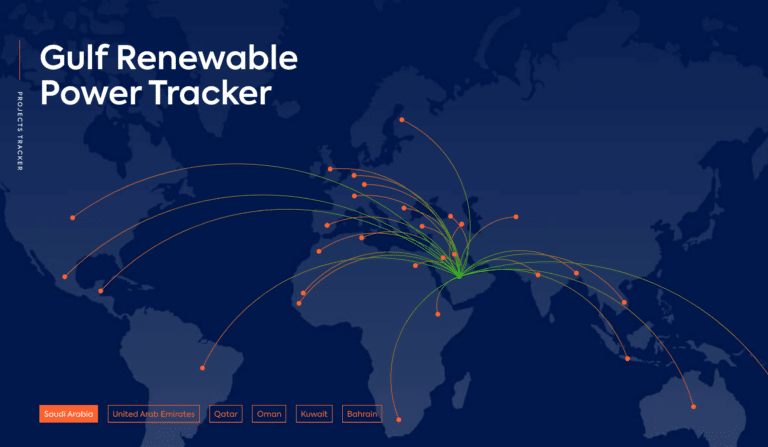
How the Next US President Could Shape Energy and Climate Policy
November’s election for president of the United States will have crucial implications for the nation’s and world’s energy and climate policies.
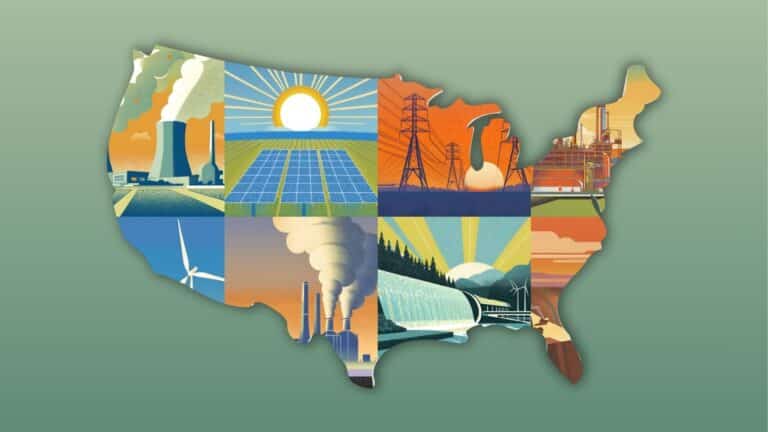
Thematic Bonds Can Help Increase Investment in Responsible Mining of Critical Minerals
Without an increase in the supply of critical minerals, there is no pathway to meet the Paris Agreement's 1.5°C temperature rise limit, as they are essential components of many clean energy technologies ranging from solar panels to wind turbines to electric vehicles and storage batteries.
